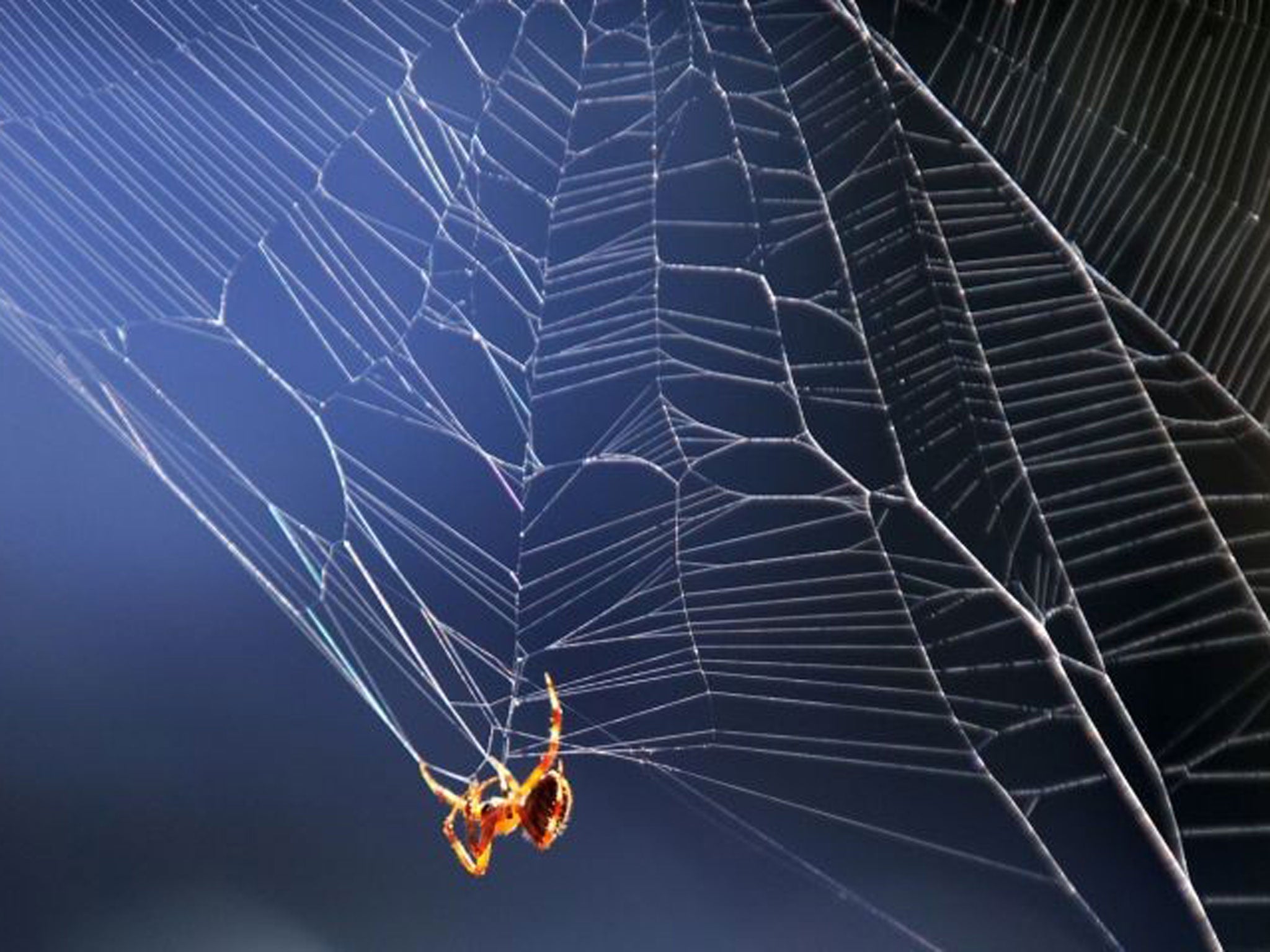Power of the web: The secret of how spiders catch their prey
New research reveals that an electrical quirk sends a spider's woven silk springing towards its victims. Zander Swinburne unravels the science

Spun from silk, with the strength of steel but with extraordinary elasticity, a spider's web has long been regarded as one of Mother Nature's most amazing feats. Now scientists at Oxford University have revealed another unique quality – webs actively spring towards prey thanks to electrically conductive glue spread across their surface.
Researchers discovered that the electrical properties of a glue that coats spider webs causes them to reach out to grab all charged particles, from pollen and pollutants to flying insects.
The study, published in Naturwissenschaften journal, shows how a quirk of physics causes webs to move towards all airborne objects, regardless of whether they are positively or negatively charged. This explains why webs are able to spring towards prey and how they collect small airborne particles so efficiently.
Spider webs could, according to researchers, be used for environmental monitoring as they actively filter airborne pollutants with the same accuracy as expensive industrial sensors.
"Electrical attraction drags airborne pollutants including aerosols and pesticides to the webs, so you could harvest and test webs to monitor pollution levels – for example, to check for pesticides that might be harming bee populations," said Professor Fritz Vollrath of Oxford University's department of zoology, who led the study.
"What's fascinating is that you can detect some airborne chemicals just by looking at the shape of the webs. Many spiders clear particles from their webs by eating them, including chemicals that are electrically drawn to the web."
In tests spiders are known to create different qualities of web depending on their drug consumption, Professor Vollrath said. "We already know that spiders spin different webs on different drugs, for example creating beautiful webs on LSD and terrible webs on caffeine. As a result, the web shapes alone can tell us if any airborne chemicals have psychological effects."
The researchers showed that the webs also cause local distortions in the Earth's electric field since they behave like conducting discs. Many insects are able to detect small electrical disturbances, including bees, that can sense the electric fields of different flowers and other bees.
Electrical disturbances caused by spider webs are extremely short-ranged, so it is not yet clear whether insects would be able to sense them before the web snaps out to grab them. Professor Vollrath added that spider webs make use of the static charge developed by moving insects to "actively catch prey".
The latest revelation will add to the fascination with spiders' webs, the structures of which are already under investigation for potential applications in industry, including in bullet-proof vests and even in artificial tendons.
Join our commenting forum
Join thought-provoking conversations, follow other Independent readers and see their replies
Comments